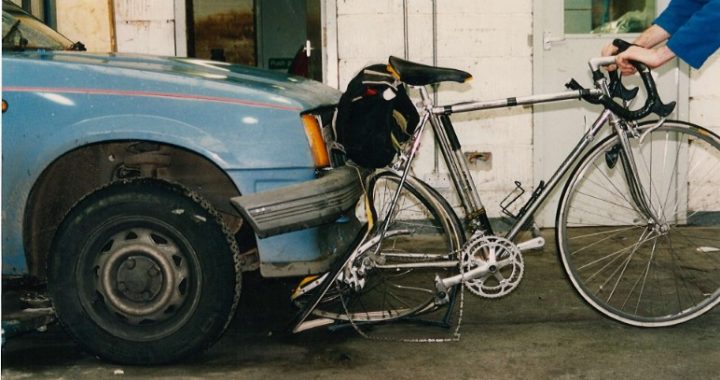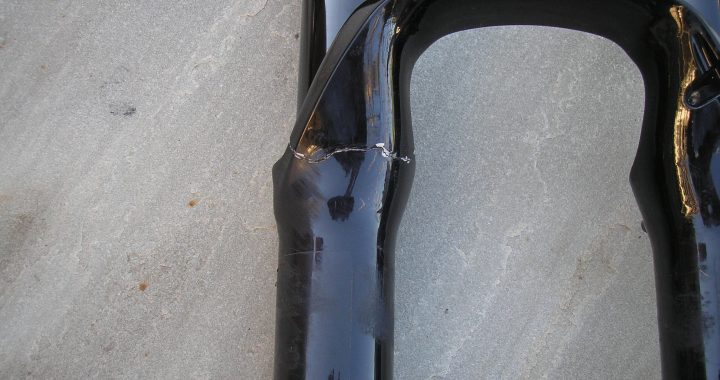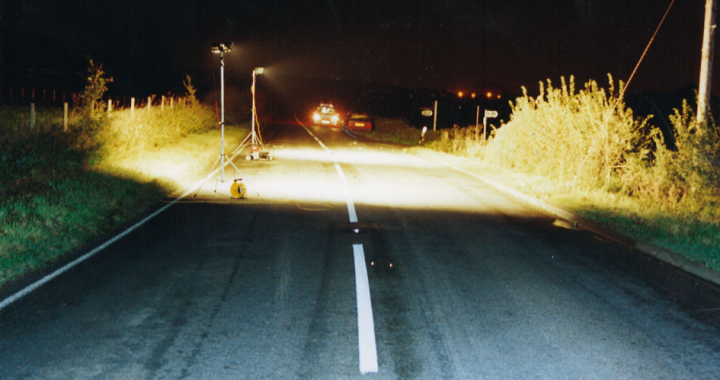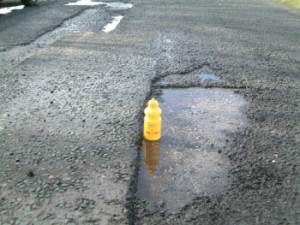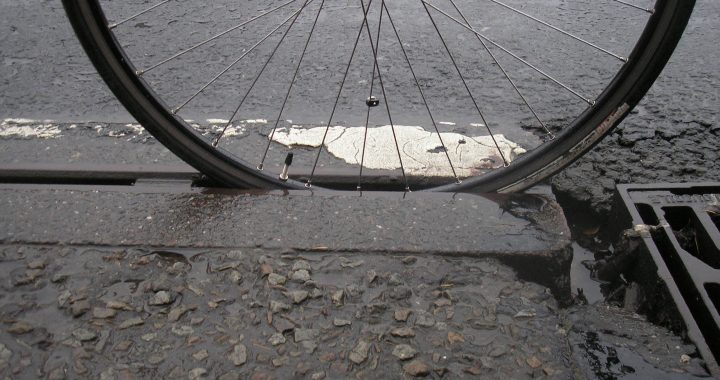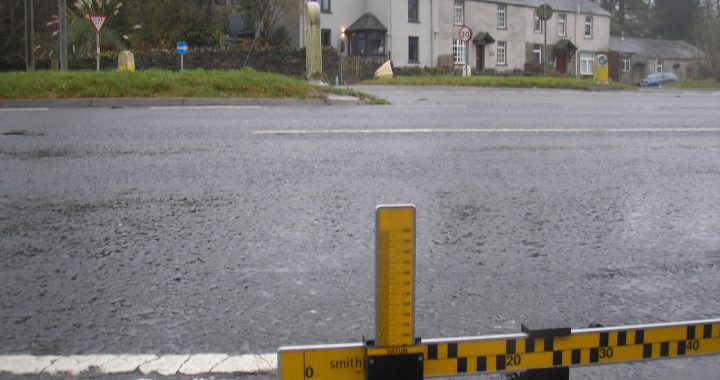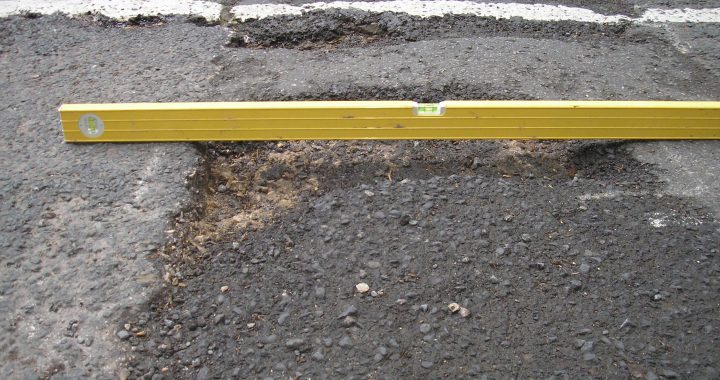Harry Colledge was a much loved husband, father, grandfather, friend and teacher. He lived a full and fulfilling life and is sadly missed by all who knew him. I am so very sorry to you for your loss. He sounds truly one of a kind.
I said at the outset of proceedings that the law requires me to answer four questions. To do this, I am required to complete a document called a record of inquest.
To enable me to complete this document and answer the questions the law requires of me, I am required to summarise the evidence. I do not simply repeat all of the evidence we have heard. To do so is no valuable use of your time or mine. All of the evidence we have heard in court or which has been read or adduced under rule 23 of the Coroner’s inquest rules has been considered in the course of my determination. Any omission from my summing up is in the interests of expediency and not indicative than any evidence did not play a role in my determination.
Harry Colledge was a fit and active 84 year old man. He had a large number of passions and interests, foremost of which was cycling. He was keenly involved in cycling activities in the local area and rode, it seems on an almost daily basis.
On the 2nd of January 2023, Mr Colledge set out to ride with his friend Nigel Mycock. This was a usual occurrence. The men set off on their ride and the route took them down Island Lane, Winmarleigh. The pair were riding side by side until they came to a groove in the centre of the road when Mr Mycock moved to the left side and Mr Colledge to the right. Mr Mycock was slightly ahead and suddenly heard a sickening crunch. He turned to see Harry on the floor, with the bike still veterrn his legs. He immediately ran to help his dear friends.
A Milk Tanker stopped to block the road and to assist. Emergency services were called and a large number of emergency resources attended the scene included the emergency helicopter service. In addition, shortly after the collision, a number of cyclists who by chance knew Mr Colledge passed by and were able to assist in rendering him care and first aid.
Miss Hannah Faulker, a passerby who was in a car with her daughter which came to a stop behind the tanker also provided assistance. She was previously a volunteer first responder and she was able to coordinate the first aid including CPR until the emergency services arrived.
I wish to commend the actions of every one of those bystanders who fought valiantly to help Mr Colledge in his time of need. They are all worthy of credit and thanks for their efforts not only in attempting to save his life but also in comforting him during that time. I would particularly note the dedication of Miss Hannah Faulkner who was wholly unrelated to the cycling community but utilised her important skills and experience. In a world where the news is filled with stories of horror and division, the actions of Miss Faulkner and the other bystanders is evidence, I feel sure, that kind hearted people continue to exist and whilst tragically those actions were unable to save Mr Colledge’s life, they were able to sustain him sufficiently to ensure he made it to hospital, giving him the best possible chance of survival which sadly was not able to occur.
Mr Colledge was treated at the scene and transported to the Royal Preston Hospital. He had a pulse in the ambulance and when he arrived at hospital. However a number of scans were carried out which demonstrated hypoxic brain injury, that is to say a lack of oxygen to his brain, in addition to broken vertebrae in his neck. Mr Colledge did not regain consciousness and sadly passed away, with family by his side and his death verified at 1605.
Dr Rumualdo offers the Court a cause of death of 1a) loss of consciousness with loss of airway, leading to hypoxia and cardiac arrest and in part 2) intramural haematoma of thoracic aorta.
PC Glen Hilton of the Lancashire Police Collision investigation unit attended at the scene. He examined the road, Mr Colledge’s bike, which was found to be in good working order, and reached the conclusion in his professional opinion the collision was caused by Mr Colledge’s front tire entering a crack in the centre of the road, causing his bike to become stationary and he was thrown off it, causing the injuries which cost Mr Colledge’s life.
PC Hilton concluded that Mr Colledge would have had less than 2 seconds to take evasive action from the point at which the defect became visible and thus, with the necessary thinking or reaction times in place, he had insufficient time from sighting the defect to enable him to avoid it.
That is a summary of the events of the 2nd January 2023, but important factual features relevant to this inquest start some months earlier.
Mrs Brenda Brodie is now the deputy chairman of the local Parish Council. In September 2022 she was a parish councillor. The Chairman of the parish council is Mr Andrew Hull, who’s wife is Beverley Hull. They live on a farm along Island Lane. Mr Hull had remarked to Mrs Brodie that the condition of the road along Island Lane was deteriorating. Being, to quote Mrs Brodie, less IT literate, Mr Hull asked Mrs Brodie to take the photographs and so it was that on the 9th of September 2022 Mrs Brodie and Mrs Hull commenced a walk along Island Lane. In the course of their walk, they observed a number of defects in the carriageway which they felt to be noteworthy and photographs were taken. In some photos, Mrs Hull was used as a prop for scale to indicate the significance of the defect.
Two photographs have been displayed significantly in the course of this inquest, the first is the photograph I have come to term the “hands” photograph, showing Mrs Hull’s hands within a crack, and the second is a longer view of a crack in the carriageway. To the top left of the photograph is Cogie Cottage, identifiable by barriers and a cone following an entirely unrelated collision between a car and house some time earlier.
Mrs Hull explained in her evidence that the crack was at least up to her wrists, she could have put her arms in further but was concerned about whether she would be able to get them out again.
She also stated that the photograph of her hands in the crack was at the top end of the crack visible in the photograph showing a crack with Cogie Cottage at the top left. Stating when directly asked “it was the same crack” in both photos.
This is now known to be the scene of Mr Colledge’s collision on the 2nd January 2022.
On the 10th September 2022, Mrs Brodie emailed the photographs to Mr Mark O’Donnell. He is the operational highways manager at Lancashire County Council. Mrs Brodie had his direct contact details after the Parish Council worked with him with regards to flooding in 2019. She stated
“Hi Mark, Andrew has spoken to you about Island Lane and he asked me to take some pictures and send to you which I did earlier today, headed Island Lane. The pictures are taken on the lane from Cogie Crossing Cottage to the bridge near Tyrer Farm but basically the road along the whole of Island Lane and some of Church Lane needs resurfacing. Kind Regards, Brenda”.
Mr O’Donnell told this inquest that he was alarmed by the photographs, particularly the “hands” photo. He replied immediately to Mrs Brodie then arranged a meeting on Monday the 12th September with a team of engineers and others with whom he works. This included Mr Wayne Peake.
Mr O’Donnell’s direction was that the defects required inspection and repair and he advised the team at the meeting to ensure this one done. The team at the meeting with Mr O’Donnell WERE shown the photographs taken by Mrs Brodie.
On the 15th of September 2022, a number of LCC Highways Operatives, all highly experienced in their roles were despatched to inspect and repair Island Lane. They were not, the unanimous evidence of the highway operatives states, shown the photographs or told any information about locations of defect, particularly with regards to Cogie Cottage. The evidence suggests they were told words to the effect of go to Island lane to identify and repair any defects.
And so it was on the 15th September 2022 that two different vehicles, one 7.5 ton vehicle driven by Steve Oldham with Paul Littlewood as passenger and a second HGV class vehicle driven by Mr Richard Hull with Mr Riley as passenger, set off to inspect Island Lane. The seating position in these vehicles is said to be roughly 6ft off the ground.
It is entirely to be expected that the individual highway operatives could not be expected to remember the specific details of the inspection on that day given the number of roads they inspect on each day and the passage of time and I am grateful to all of the highways operatives who came to court to give evidence about their inspections. It is easy for those of us who sit in a courtroom day after to day to forget that it is highly unnatural experience to give evidence to a room full of people. I consider all 4 highways operatives were honest in their evidence and doing their best to assist this court in determining the truth.
However the outcome of all four men inspecting that road is that no defects were identified. Specifically, the defect shown in a photograph with Mrs Hull’s hands is was not identified. The operatives did not get out of their vehicles to closer inspect any defects.
All 4 operatives accept in their evidence to this court that the defect shown in the “hands” photograph presented a danger they would have considered necessary to repair. All accepted that the crack shown in the other photograph would have warranted further investigation if it had been seen to ensure the depth could be assessed.
The crack which appears in the photograph taken by Mrs Brodie on the 9th of September 2022 was not seen by any of the highway operatives and was not the subject of any on foot inspection or repair on that day.
In evidence, Mr Richard Hull expressed the view that a tarmac type repair could and probably would have taken place at the scene but the durability of that repair is questionable and dependent upon a number of factors including the weather and nature of vehicles which pass over shortly after the repair. Mr Hull explained that a proper repair, in his view, required shutting the road and JCB equipment to patch the road.
All roads are the subject of inspection to ensure their condition is safe for use. The frequency of such inspections is dictated by factors such as the usage of road and Island Lane is subject of 3 monthly inspections.
A standard 3 monthly inspection, wholly separate from the visit to look for defects which occurred on the 15th September 2022, took place on the 26th September. On that occasion, Highways Safety Inspector Mr Treen conducted the inspection with a colleague.
He was in a small van, roughly the size of a citreon berlingo. He was probably the driver, because the van was “his” allocated van, though he does not remember the inspection itself.
Mr Treen completed the inspection with his colleague and did not identify any defects. He did not stop his vehicle to closer inspect any defect.
Mr Treen agreed that the defect in the hands photo presents a danger and needed repair. His evidence, however is categoric that the crack in question WAS NOT present on his inspection on the 26th September 2022. He is categoric that he did not miss the crack, his evidence is that the crack was not there on the 26th of September 2022. He said, and I quote “I did not miss it. I believe it must have been repaired before my visit”.
Ms Williams is the Highways Group Manager for Lancashire County Council, a role she has held since January 2021 but worked in an identical role previously for a different local authority. The role is a strategic role as opposed to an “on the ground” role dealing with inspections or repairs. She explained that local authorities have responsibilities for highways under their control and have a system of policies in place, which confirm with national codes of practice which set out how the council meets its statutory duties with the resources available.
Island Lane, Ms Williams confirmed, is a highway which LCC have responsibility for. It is secondary distributor Class C road which has characteristics of a PEAT moss road. This is something the Council is aware of.
With regards to local authority highways policies, although cracks are not specifically referenced within the examples of possible defects, the council does and has previously repaired cracks
Island lane was the subject of 3 monthly inspections which are driven but inspectors are able to get out of the car to look closer at possible defects. The inspectors are audited by senior inspectors.
With regards to the defect identified in the photographs taken by Mrs Brenda Brodie, the LCC records indicate no repairs to this part of Island Lane between September 2022 until the date of Mr Colledge’s incident on the 2nd January 2023 when a temporary repair was made. Since that time, a geotechnical survey team have investigated the road and a fuller repair took place. Indeed Police Officer Matthew Davidson, hastily commandeered by myself, confirmed that on the 19th of April 2022 he attended the scene of the collision, with myself to enable me to view the road and saw geotechnical survey team in place with a hole dug of some metres deep. This was then repaired and as recently as 6 weeks ago he checked the road and found the repair to be holding.
Ms Williams explained there is a longer term strategic plan involving roads which may need capital investment and Island Lane is part of that ongoing process to look at whether significant long term changes are necessary.
Ms Williams explained that in her view she considers the defect shown in the hands photo required further inspection to determine depth and so on and if repair was necessary for that to take place within 10 working days.
She felt that the repair team who visited Island Lane on the 15th September 2022 would have been helped by provision of the photographs sent by Mrs Brodie and all relevant information about the location but also spoke of a new app “LOVE CLEAN STREETS” for reporting defects which now contains GPS references and photos etc. In addition operatives have access to ipads which CAN ACCESS photographs etc. She was not sure whether such photos are displayed or have to be accessed by the operative.
There has been no additional training since Mr Colledge’s sad death in respect of operatives for identification of defects and Ms Williams explained that an inspector ought to have seen Island lane prior to the repairs team going out on the 15th September 2022. Ms Williams accepts that the crack was missed on the 15th September 2022 inspection but stands by Mr Treen’s position that he did not miss the crack on the 26th September 2022 as it was not there.
Following the report made by Mrs Brodie on the 10th September 2022, there were no further reports to the council about Island lane defects.
Mr Runacres is a highway maintenance expert. He explained his significant expertise in collision investigation for over 30 years and subsequent research projects and expert input into research projects. He has authored 30 technical papers with regards to technical issues and provides guidance to highway authorities with regards to their policies
He explained that he agreed with LCC’s categorisation of the road and in fact other authorities may have given the road a lower grading. He told the court that the difficulty with peat or moss roads is that ground movement occurs which causes problems with surface cracking with use. Damage occurs usually over prolonged periods of time as road construction is flexible and will bend until cracks appeal.
The defect visible in police photographs from the 2nd January 2023 are consistent with a crack caused by ground movement that takes a considerable period of time to develop.
Mr Runacres confirmed that the records available to him showed no evidence of repair to the defect in question between September 2022 and January 2023.
With regards to a set of questions specifically ask of him in his expert capacity, Mr Runaces indicated that in his opinion, the crack defect in which Mr Colledge’s bike became stuck would have developed over a long period of time. For example, google street view images from March 2009 appear to show that a longitudinal crack defect was present in 2009 at the accident location, thought it cannot be said to have presented a hazard at that time.
“At least one of the photographs apparently taken by Mrs Brodie on 9th Septemerb 2022 appears to show the crack defect involved in the accident and in my opinion the defect posed a hazard to road users at that time and would seemingly have met the defect intervention criteria of LCC.
Mr Runacres continued that “in my experience, such defects invariably deteriorate and become more severe over time. I therefore consider it to be unlikely that ground movements and/or any other mechanism would have temporarily caused the pertinent crack defect to ‘close up’ or become less severe during the days and weeks after 9 September 2022 and then ‘open up’ and become more severe again by the time of the accident involving Mr Colledge on 2 January 2023. 7.5 In addition, the evidence I have seen indicates that LCC did not carry out any repairs to the pertinent crack defect during the period between 9 September 2022 and 2 January 2023.”
When asked directly about his opinion vis a vis the standard of proof in this jurisdiction, Mr Runacres confirmed that in his opinion it is more likely than not that the defect which caused Mr Colledge’s collision was there in September 2022. He stated “I am not aware of any mechanism to cause a crack to be present on the 9th September 2022, not present on the 15th and 26th September 2022 and then reappear on the 2nd January 2022”. He has never, in all of his experienced, encountered a situation where a 6 inch deep hole has closed up.
In light of that conclusion, Mr Runacres’ expert opinion is that it is more likely than not that the defect shown in the hands photo was present during the inspections on the 15th and 26th of September 2022 and out to have been detected on the inspections which took place on the 15th and 26th of September 2022.
Mr Runacres considers that the defect in the hands photo presented a hazard to road users from 9th September 2022, the earliest date he was asked to consider and ought to have been repaired within a maximum period of ten working days.
10 working days relates to the LCC highways policy which specifies working days and not calendar days, for reference in case it becomes relevant, 10 working days after the 26th September 2022 was the 10th October 2022.
That concludes my summary of the evidence. I turn to consider the issues which require me to make a finding or reach a conclusion.
Sometimes cases in the Coroner’s court involve all factual circumstances being agreed but the conclusions or inferences to be drawn from them are disputed by interested persons. Sometimes the factual circumstances are not agreed and so it is my role to make a finding as to what is more likely than not to have occurred. I have at all stages of this process reminded myself of the standard of proof applicable to the Coroner’s court.
I find it helpful to determine each issue required of me in stages and so that is what I shall endeavour to do.
The first question I must answer is whether the defect in the hands photo the same defect as caused Mr Colledge’s Collision. What follows from this question is whether I am satisfied that the defect involved in Mr Colledge’s collision existed at the time of the inspections which took place on the 15th and 26th September 2022.
I have to say this is not a question which took me any significant time to resolve. It seems to me to be breathtakingly obvious that the defect shown in the photograph taken by Mrs Brodie on the 9th of September 2022 and the defect involved in Mr Colledge’s collision are the same defect.
Mrs Hull gave clear and unchallenged evidence that the crack shown in the photo with Cogie Cottage at the top left is the same crack that had her hands in in the photo we have come to call the “hands” photo. That is a crack defect just down from cogie cottage. The photographs exhibited by Ms Williams of the site of the incident and referenced within the police report and Mr Runacres report appear, to the untrained and unexpert eye to be the same crack, one can utilise the cone outside Cogie cottage as a frame of reference.
In addition, Mr Runacres, an expert of some considerable pedigree, concluded that “at least one of the photographs taken by Mrs Brodie on the 9th September 2022 appears to show the crack defect involved in the accident”.
I am therefore satisfied it is more likely than not that that the defect which was seen by Mrs Brodie and Mrs Hull on the 9th of September and is the subject of the hands photograph is part of the crack shown in the photograph with cogie cottage at the top left and this defect is the same defect involved in Mr Colledge’s collision on the 2nd January 2023.
I turn then the next issue to resolve. An issue which, to be completely frank I find wholly mystifying that I am required to resolve. That is the question of whether the defect as seen on the 9th September 2022 remained a defect and hazard throughout the time period of 9th September 2022 to 2nd January 2023. I am required, it seems to me, to resolve this issue given the evidence of Mr Treen and Ms Williams that the crack WAS NOT PRESENT on his inspection on the 26th September 2022 and thus was not missed by him.
I can find no plausible explanation which would account for a defect which was hazardous and present on the 9th of September 2022 and present on the 2nd January 2023 to have been NOT PRESENT on the 15th and 26th September 2022.
I can in fact no implausible explanation which would account for a defect which was hazardous and present on the 9th of September 2022 and present on the 2nd January 2023 to have been NOT PRESENT on the 15th and 26th September 2022.
I accept the evidence I have heard from a number of sources that peat or moss roads are subject to movement and this can change defects. But to quote Mr Runacres, an expert of significant experience, “I am not aware of any mechanism which would cause a crack to be visible on the 9th September 2022, not visible on the 15th and 26th of september 2022 and then visible again on the 2nd January 2023”. He further stated that cracks inevitable deteriorate in condition, as opposed to get better and he has never in all of his professional experience encountered a scenario where a 6 inch hole as closed up.
I accept his evidence and find as fact that defect which was visible in the photographs taken by Mrs Brodie remained a defect and visible from the 9th September 2022 to the 2nd of January 2023.
Further, I consider that the position adopted by the Council in respect of this defies all reasonable logic. I understand that Mr Runacres report was, in error, provided to the council later than it ought to be and I am genuinely sorry for the delay and any consequence of that delay. However even in the face of the expertise of Mr Runacre, the council’s maintained position in respect of the crack is, I consider not capable of belief and contrary not only to the weight of the evidence but also to common sense.
Mr Colledge’s family are well within their rights to feel outraged at the continued refusal of LCC to accept the glaringly obviously with regards to the ongoing presence of this crack.
I note the evidence of Mr Treen, he was also, I find, an honest witness trying to assist the court as best he could. However the options I am presented with are that a crack visible in September 2022 and January 2023 closed up on the 26th September by some mechanism unknown to expertise or that he made a mistake in his inspection and failed to spot something he ought to have.
The next issue for me to consider is whether that defect, once reported on the 10th September 2022 was appropriately managed.
Mr O’Donnell was recipient of the email from Mrs Brodie. He responded immediately and, I find responded appropriately FOR HIS ROLE. He organised a meeting of his team including engineers and ordered that repair teams were sent out. He showed his team the hands photograph and passed on the relevant detail that he had. From his perspective as an operations manager, I consider that his reaction was appropriate. He appropriately delegated the task of repair to a team whos job it was to carry out that repair. He could have checked up on their repairs to ensure it was carried out or carried out to satisfaction, but I consider he as an operations manager is entitled to rely upon his team to carry out their role to an approved standard. It would not be reasonable to expect Mr O’Donnell to follow up on every repair job which made its way to him instead of via the online portal.
I accept that it was unfortunate that the HAMS system was not used for third party reports but there is no clear evidence that this would have lead to different information being available to the team on the ground.
What follows from this is whether the operatives on the 15th September were given sufficient information to enable them to complete their job. The unanimous evidence was that they were told to inspect island lane and repair anything they found. They weren’t told the information about Cogie cottage and they weren’t shown the photos. Undoubtedbly it would have been helpful for the information and photos to be given to the team, each of whom considered that had they seen the photos they would have known there was something specific to look for and made extra efforts to find it.
However the difficulty I have with this issue is that the photo and information, whilst undoubtedly helpful, should not have been necessary. A full and appropriate inspection of the entirety of any road ought to be sufficient to identify any defects, even without the specific information. I therefore conclude it would have been helpful for photos and information to have been passed to the operatives but I do not consider the failure to do so was the cause of the inspections not finding the defects.
Were the inspections of the 15th September 2022 adequate
I am told that in an ideal scenario an inspector would have visited the site first. However 4 highly experienced operatives travelled that route specifically looking for defects and found none. The operatives who worked on the 15th September appeared to accept they must have missed the crack defect. All accepted it was a hazard and all accepted it warranted repair. The consensus view was, to greater or lesser degress of conviction, that their main concern was hazards to road users.
I accept the evidence of Mr Runacres that an appropriate inspection on the 15th of September 2022 should have identified the defects photographed by Mrs Brodie on the 9th September 2022 and involved in Mr Colledge’s collision. I therefore conclude it is more likely than not that the inspection which took place that day was insufficient or of an unacceptable standard.
Was the inspection of the 26nd September 2022 adequate
Again, I accept the evidence of Mr Runacres that it is more likely than not the defect was present on the 26th September 2022 and represented a hazard on that date. I accept his evidence that a reasonable inspection, however it was carried out, ought to have identified the defect in question. I therefore conclude it is more likely than not that the inspection which took place on the 26th September 2022 was insufficient or of an unacceptable standard.
Again, I consider with care the evidence of Mr Treen and repeat that the evidence before me is either of a crack closure of unknown mechanism, repair carried out by someone other than LCC as their records show no signs of repair or that Mr Treen is sadly mistaken. I conclude that MR Treen is mistaken. The crack was there to be seen on the 26th of September and his inspection failed to identify it.
Did that defect cause Mr Colledge’s death
PC Glen Hilton, in the course of an extremely helpful collision investigation report explained that the cause of Mr Colledge being thrown from his bike was his wheel entering the crack in the defect. He concluded that the speed Mr Colledge was travelling, he did not have sufficient time to avoid the crack from the point at which it became visible. I therefore am satisfied it is more likely than not that Mr Colledge’s accident was as a direct result of the defect in the carriageway on the 2nd January 2023, a defect I have already found had been present and presenting a dangerous hazard to road users since the 9th September 2022.
If reasonable steps had been taken to identify and repair the defect after Mrs Brodie’s report in September 2022, would the incident with Mr Colledge have occurred.
Mr Runacres’ evidence is that either inspection on the 15th or 26th September 2022 ought to have identified the defect and it would have been eligible for repair within 10 working days. I accept his evidence which was unchallenged by anyone with an equivalent level of expertise.
10 working days after the 26th September 2022 is the 10th October 2022. Therefore I conclude the defect ought to have been the subject of a repair by the 10th October 2022.
Whilst I accept that further deterioration may have occurred after the repair, or futher deterioration, I am satisfied it is more likely than not that had a repair taken place on or by the 10th October 2022, the defect which caused Mr Colledge’s collision would not have been present in the state in which is was on the 2nd January 2023. It follows I am satisfied that if this had occurred, it is more likely than not that the collision would not have occurred and thus more likely than not that he would not have died at that time.
Turning then to the record of inquest. I formally declare the name of the deceased is Harry Colledge. He was born on the 5th May 1938 at Altrincham, Trafford and tragically passed away on the 2nd January 2023 at the Royal Preston Hospital. He was a teacher (retired) much loved husband of Valerie Colledge.
I accept the evidence of Dr Rumualo that I should record a medical cause of death of 1a) loss of consciousness with loss of airway leading to hypoxia and cardiac arrest and in part 2 intramural haematoma of thoracic aorta.
That leaves me with box 3 and 4. As discussed, a number of short form conclusions exists, Accident in coronial law is an unintended act which results in death. crack and get thrown from his bike. Whilst theoretically a possibility, I cannot conclude that a short form conclusion, even with detailed box 3 meets the facts of the case or comes close to meeting the justice of the circumstances of the death.
I therefore reach a narrative conclusion.
Harry COLLEDGE died on the 2nd January 2023 at the Royal Preston Hospital as a result of injuries he sustained having been thrown from his bicycle. Mr COLLEDGE was an otherwise fit and healthy man who was a keen cyclist. On the second of January 2023 he was cycling along Island Lane, Winmarleigh when his bicycle entered a crack defect in the carriageway, causing him to be thrown from his bicycle. This defect had been identified to the relevant Council in September 2022 and the subject of highway inspections on the 15th and 26th September 2022, involving six highways team operatives. Despite the Council’s notification of the defect and its approximate location, these inspections did not identify the defect which caused Mr Colledge’s injuries and thus a dangerous hazard had remained on Island Lane from 9th September 2022 to 2nd January 2023.
I turn then to the issue of a regulation 28 notice.
The coroner has the power to issue a notice to prevent future deaths if they are concerned by the evidence which arises in an inquest that further deaths may occur if action is not taken. A coroner does not have the power to specify what action must be taken.
Mr Williams on behalf of the family submits that the quality of the inspections, combined with the failure to pass on photographs and relevant information without any reasonable explanation amounts to a system whereby the same tragic circumstances could arise again.
Ms Hayton on behalf of LCC points to the new Love Clean Streets App which allows for a much greater precision including GPS location and allows operatives to access info such as photos.
There is no evidence before me of any training updates, policy reconsiderations or even debriefs taking place between LCC and operatives after Mr colledge’s sad death. The Council’s position, maintained to the bitter end, that the crack must not have been present on the 26th September 2022 was met with audible laughter in this court room when it was stated by Ms Williams in court, even from those unconnected to Mr Colledge and his family.
I am not satisfied that there have been sufficient changes or reflection upon the circumstances leading up to Mr Colledge’s death and I am concerned there is a significant risk of further deaths occurring if further action is not taken.
A reg 28 notice is not something I issue lightly, in fact I believe I issue fewer than almost all other Coroners. However the unrealistic, unsustainable and incomprehensive position adopted by LCC with regards to the presence of the defect on Island Lane leaves me with little confidence that meaningful changes have taken place.
Mr Colledge’s death is an utter tragedy to his family and all who knew him. To avoid any further tragedies, I consider it is necessary to issue a regulation 28 notice. The specific details of which I will take some time to draft this afternoon.
Thanks to Counsel
Thanks to witness
Thanks to family

